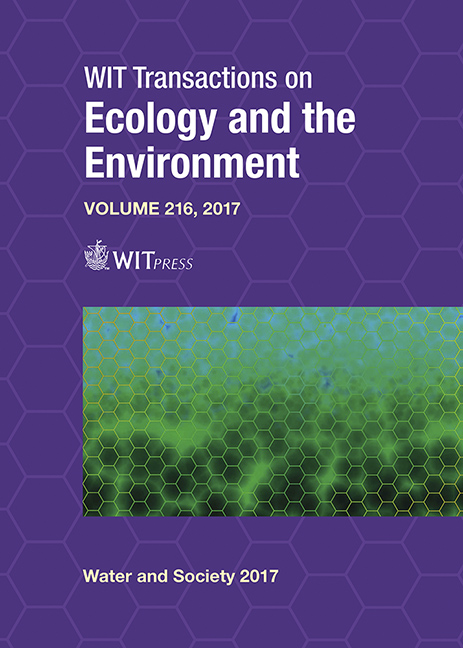AN ENVIRONMENTAL STUDY OF THE NANT-Y-FENDROD STREAM IN SOUTH WALES
Price
Free (open access)
Transaction
Volume
216
Pages
12
Page Range
143 - 154
Published
2017
Paper DOI
10.2495/WS170131
Copyright
WIT Press
Author(s)
JONATHAN L. JONES, RICHARD O. JENKINS, CHRISTOPHER M. PALMER, PARVEZ I. HARIS
Abstract
The Nant-y-Fendrod stream in South Wales fails to meet the water quality standards set out by the European Union Water Framework Directive (2000/60/EC). The Directive requires that all waterbodies in the United Kingdom reach “Good” Status by 2027. The consequences of failing to meet this standard would be a failure to protect our most vital natural resource and a risk of infraction proceedings being taken against UK Government. The water quality of the Fendrod stream is affected by many sources of pollution, most notably ecotoxic heavy metals, arising from an industrial legacy of metal smelting. This study examines the environmental factors affecting the physical, chemical and biological state of the Fendrod stream and whether it would be possible to remediate it in order to achieve “Good” Status. This research will facilitate an informed assessment of any options for remediation, including potential for phytoremediation using water hyacinth (Eichhornia crassipes). A multi-disciplinary approach has been employed, using state of the art water quality sampling, biological sampling, hydrometric surveying and laboratory analytical techniques such as Inductively Coupled Plasma – Mass Spectrometry. Diffuse Gradient in Thin Films and Acoustic Doppler Current Profiling for water quantity and quality measurement have also been applied. Our initial findings show that zinc and cadmium are consistently elevated in excess of environmental quality standards. Further studies are in progress including phytoremediation trials, of which initial results obtained are encouraging. Study outcomes will assist UK Government reporting to the European Union in relation to status, any suggested remediation options, and whether these options may be feasible. This work will inform further research and/or modelling which may be required to implement findings and can possibly be repeated or transferred to other failing water bodies within Europe and possibly beyond within the wider scientific community.
Keywords
Nant-y-Fendrod, water quality, water framework directive, heavy metals, aquatic pollution, good ecological status, biotic ligand model, sustainable management, phytoremediation, diffuse gradient in thin films, Eichhornia crassipes





